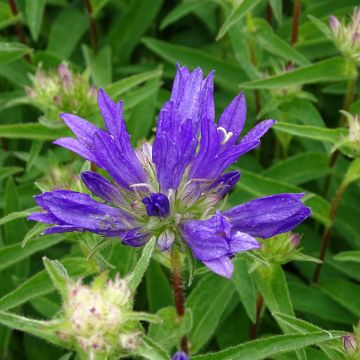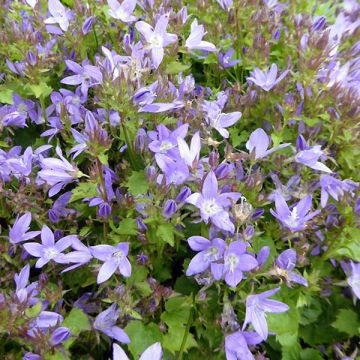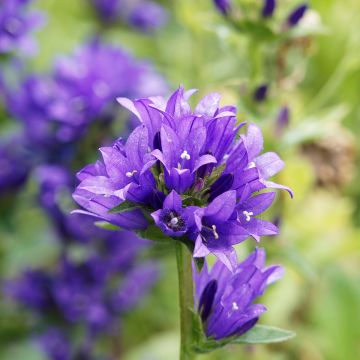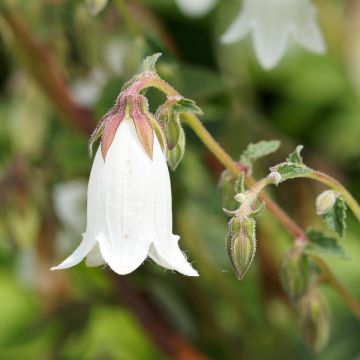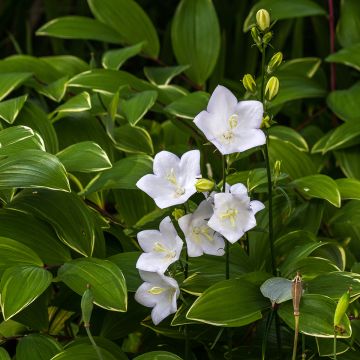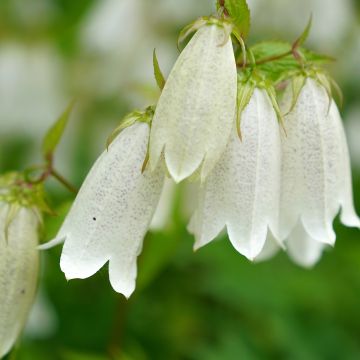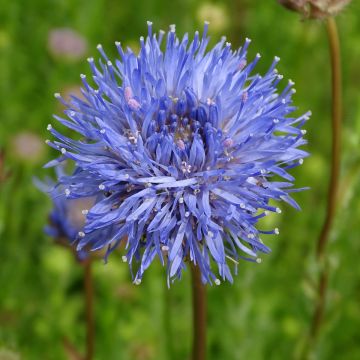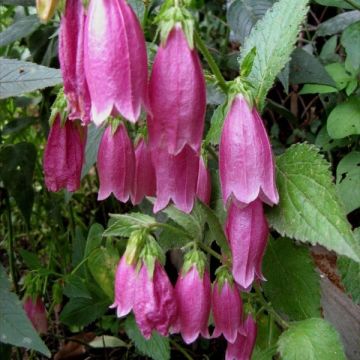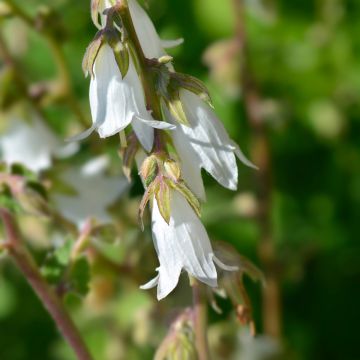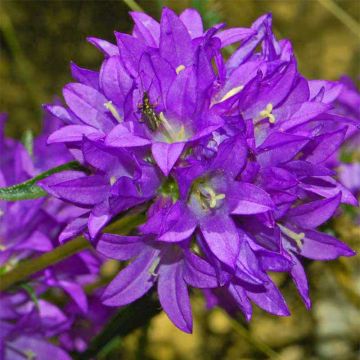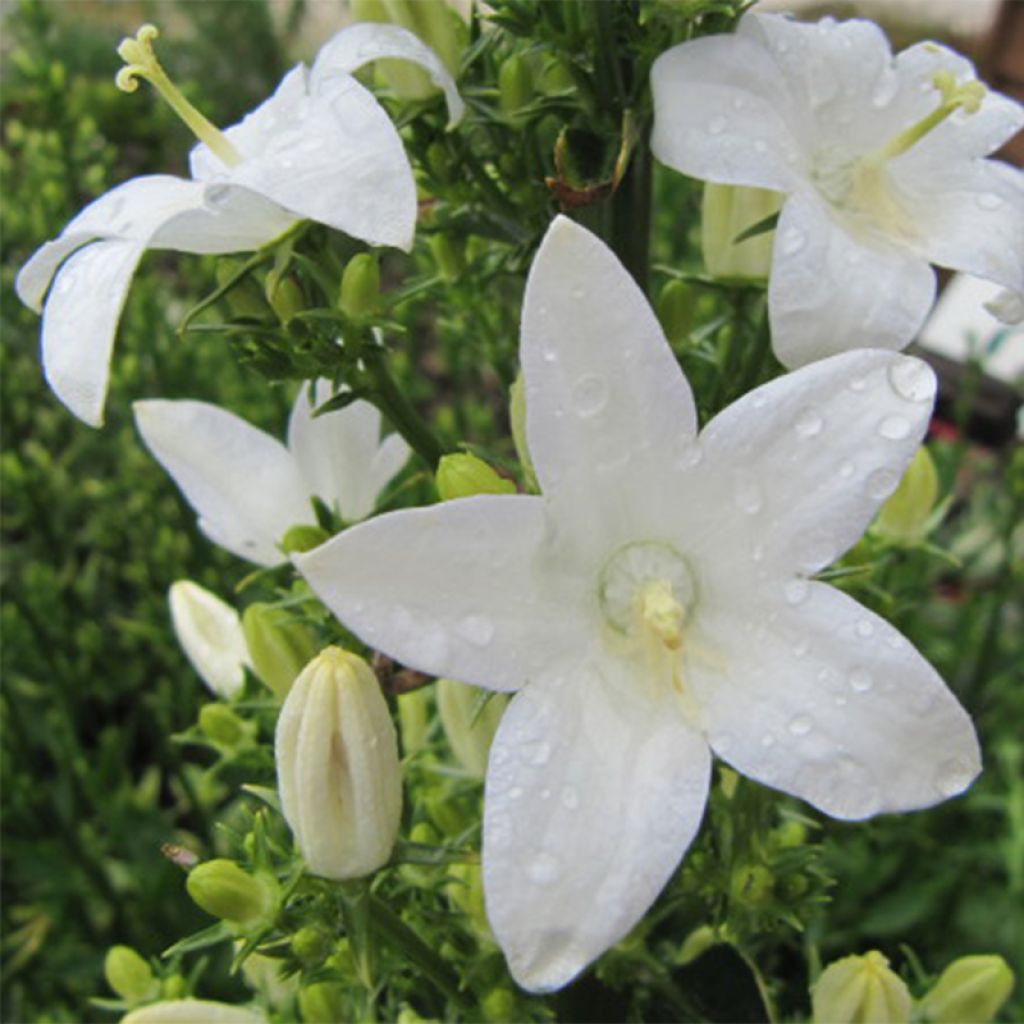

Campanula pyramidalis Alba
Campanula pyramidalis Alba
Campanula pyramidalis Alba
Bellflower
This item cannot be shipped to the selected country
Delivery charge from €5.90
Delivery charge from €5.90
More information
Schedule delivery date,
and select date in basket
This plant carries a 12 months recovery warranty
More information
We guarantee the quality of our plants for a full growing cycle, and will replace at our expense any plant that fails to recover under normal climatic and planting conditions.
From €5.90 for pickup delivery and €6.90 for home delivery
Express home delivery from €8.90.
From €5.90 for pickup delivery and €6.90 for home delivery
Express home delivery from €8.90.

Does this plant fit my garden?
Set up your Plantfit profile →
Description
Campanula pyramidalis 'Alba', also known as the pyramid bellflower, is a tall perennial that combines charm and vigour in a very natural way. It has tall flower spikes abundantly filled with long-lasting white, slightly fragrant flowers in the shape of a star from late spring. It quickly forms beautiful clumps with shiny, bright green foliage. It is sometimes considered a biennial, as the flowering decreases in the second year, but it easily self-seeds in the garden, ensuring its longevity. This variety dislikes intense sunlight and thrives in well-drained, soft, humus-bearing soils.
Campanula pyramidalis is a short-lived and not very hardy perennial of the bellflower family, native to southern Europe, particularly Italy and the western Balkans. It was brought back from Slovenia in 1594 and has since had a long career as an excellent perennial in our gardens. 'Alba' is the white form of this plant, whose leaf and flower silhouette resembles an elongated pyramid, 1m (3ft) tall and 50cm (20in) wide. The foliage consists of large, ovate, heart-shaped, bright green and glossy leaves. It forms a 'skirt' up to a height of 40 to 50cm (16 to 20in), partially covering the tall flower spikes that appear in spring and extends from June to August-September. Hundreds of fragrant, open white bell-shaped flowers, 3 to 4cm (1 to 2in) in diameter, live for several days before fading. The flower spikes will benefit from staking, as the wind often bends the clumps.
Campanula pyramidalis 'Alba' appreciates moist, light, even chalky soils, but dislikes direct sunlight and wind. It is a splendid wild plant that shines in partial shade and contributes to the biodiversity of our gardens. It has a rightful place in a natural bed, alongside other lovely wildflowers: cornflower, bear's breeches, bugbane, daylilies, purple coneflower, fennel, field scabious, meadowsweet, hemp-nettle, perennial sweet pea, or lady's mantle. Its simplicity works well alongside the roundness of old roses and softens the heavy corollas of deep red peonies. It also grows very well in pots.
About bellflowers:
The crowns of bellflowers grow white stolons that spread underground in all directions ensuring the longevity of the plant. The numerous upright stems that arise from this crown or stolons are either fertile or sterile. Thus, when one sees a large population of bellflowers, they are often only the clones of a single individual. On the other hand, different species of bellflowers hybridize very easily with each other and are often accompanied by a whole range of intermediate forms, which makes them very interesting for horticulturists.
Report an error about the product description
Campanula pyramidalis Alba in pictures
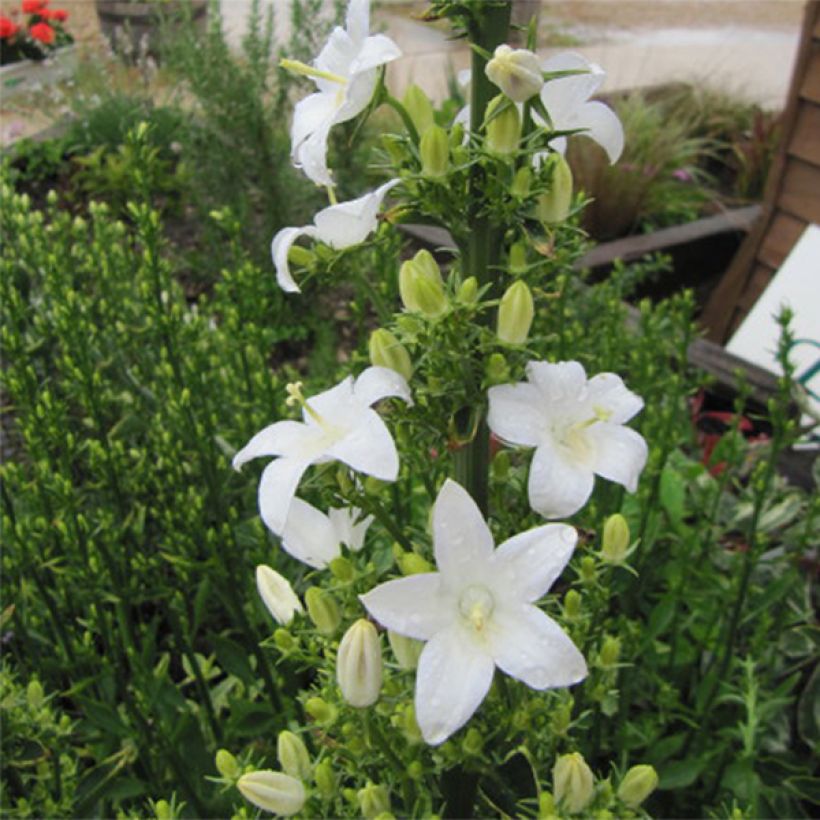

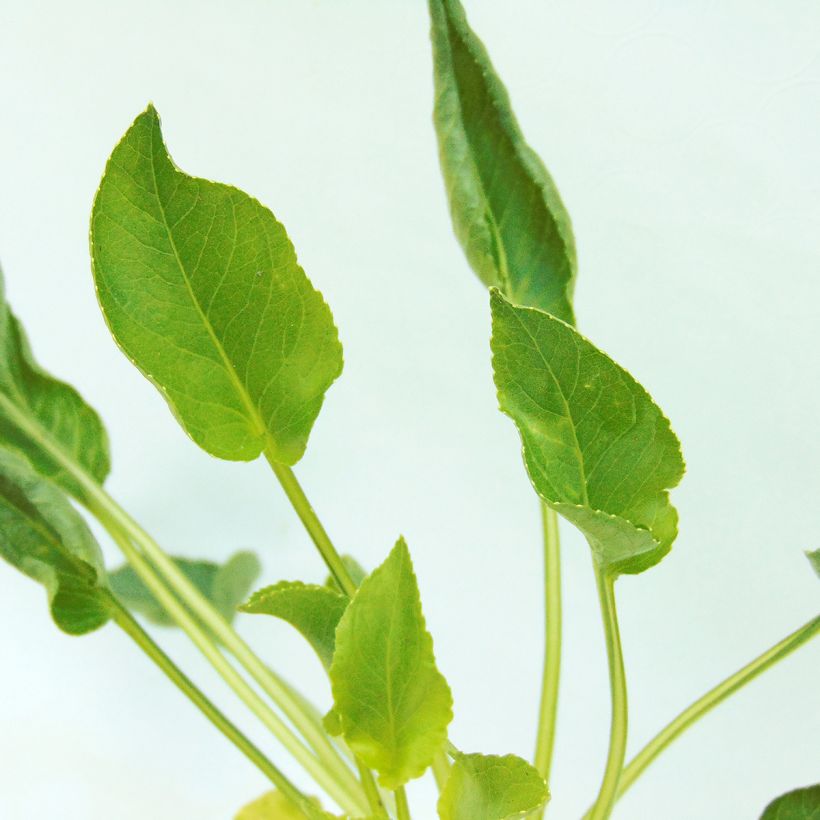

Flowering
Foliage
Plant habit
Botanical data
Campanula
pyramidalis
Alba
Campanulaceae
Bellflower
Mediterranean
Other Campanula - Bell Flower
Planting and care
Campanula pyramidalis thrives in the sun in cool climates but prefers partial shade in hotter climates. Plant it in well-drained soil that is not too dry, preferably humus-bearing, loose and deep, not retaining moisture in winter. It tolerates a wide variety of soils and is indifferent to the presence of limestone. It requires careful placement, well protected from prevailing winds due to its height. Staking may sometimes be necessary, as inclement weather easily flattens the clumps to the ground. Cutting back the stems after the first flowering will encourage a second bloom, but prevent the plant from self-seeding. If allowed to self-seed, it will do so abundantly, in the most unexpected places in the garden.
Planting period
Intended location
Care
-
, onOrder confirmed
Reply from on Promesse de fleurs
Haven't found what you were looking for?
Hardiness is the lowest winter temperature a plant can endure without suffering serious damage or even dying. However, hardiness is affected by location (a sheltered area, such as a patio), protection (winter cover) and soil type (hardiness is improved by well-drained soil).

Photo Sharing Terms & Conditions
In order to encourage gardeners to interact and share their experiences, Promesse de fleurs offers various media enabling content to be uploaded onto its Site - in particular via the ‘Photo sharing’ module.
The User agrees to refrain from:
- Posting any content that is illegal, prejudicial, insulting, racist, inciteful to hatred, revisionist, contrary to public decency, that infringes on privacy or on the privacy rights of third parties, in particular the publicity rights of persons and goods, intellectual property rights, or the right to privacy.
- Submitting content on behalf of a third party;
- Impersonate the identity of a third party and/or publish any personal information about a third party;
In general, the User undertakes to refrain from any unethical behaviour.
All Content (in particular text, comments, files, images, photos, videos, creative works, etc.), which may be subject to property or intellectual property rights, image or other private rights, shall remain the property of the User, subject to the limited rights granted by the terms of the licence granted by Promesse de fleurs as stated below. Users are at liberty to publish or not to publish such Content on the Site, notably via the ‘Photo Sharing’ facility, and accept that this Content shall be made public and freely accessible, notably on the Internet.
Users further acknowledge, undertake to have ,and guarantee that they hold all necessary rights and permissions to publish such material on the Site, in particular with regard to the legislation in force pertaining to any privacy, property, intellectual property, image, or contractual rights, or rights of any other nature. By publishing such Content on the Site, Users acknowledge accepting full liability as publishers of the Content within the meaning of the law, and grant Promesse de fleurs, free of charge, an inclusive, worldwide licence for the said Content for the entire duration of its publication, including all reproduction, representation, up/downloading, displaying, performing, transmission, and storage rights.
Users also grant permission for their name to be linked to the Content and accept that this link may not always be made available.
By engaging in posting material, Users consent to their Content becoming automatically accessible on the Internet, in particular on other sites and/or blogs and/or web pages of the Promesse de fleurs site, including in particular social pages and the Promesse de fleurs catalogue.
Users may secure the removal of entrusted content free of charge by issuing a simple request via our contact form.
The flowering period indicated on our website applies to countries and regions located in USDA zone 8 (France, the United Kingdom, Ireland, the Netherlands, etc.)
It will vary according to where you live:
- In zones 9 to 10 (Italy, Spain, Greece, etc.), flowering will occur about 2 to 4 weeks earlier.
- In zones 6 to 7 (Germany, Poland, Slovenia, and lower mountainous regions), flowering will be delayed by 2 to 3 weeks.
- In zone 5 (Central Europe, Scandinavia), blooming will be delayed by 3 to 5 weeks.
In temperate climates, pruning of spring-flowering shrubs (forsythia, spireas, etc.) should be done just after flowering.
Pruning of summer-flowering shrubs (Indian Lilac, Perovskia, etc.) can be done in winter or spring.
In cold regions as well as with frost-sensitive plants, avoid pruning too early when severe frosts may still occur.
The planting period indicated on our website applies to countries and regions located in USDA zone 8 (France, United Kingdom, Ireland, Netherlands).
It will vary according to where you live:
- In Mediterranean zones (Marseille, Madrid, Milan, etc.), autumn and winter are the best planting periods.
- In continental zones (Strasbourg, Munich, Vienna, etc.), delay planting by 2 to 3 weeks in spring and bring it forward by 2 to 4 weeks in autumn.
- In mountainous regions (the Alps, Pyrenees, Carpathians, etc.), it is best to plant in late spring (May-June) or late summer (August-September).
The harvesting period indicated on our website applies to countries and regions in USDA zone 8 (France, England, Ireland, the Netherlands).
In colder areas (Scandinavia, Poland, Austria...) fruit and vegetable harvests are likely to be delayed by 3-4 weeks.
In warmer areas (Italy, Spain, Greece, etc.), harvesting will probably take place earlier, depending on weather conditions.
The sowing periods indicated on our website apply to countries and regions within USDA Zone 8 (France, UK, Ireland, Netherlands).
In colder areas (Scandinavia, Poland, Austria...), delay any outdoor sowing by 3-4 weeks, or sow under glass.
In warmer climes (Italy, Spain, Greece, etc.), bring outdoor sowing forward by a few weeks.

































